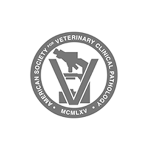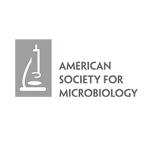Clinical Overview
Pythium insidiosum (and cryptic species P. periculosum) 1 , the causative agent of pythiosis, are a fungal-like pathogens classified as oomycetes. Dogs are more often affected than cats, but any mammal is susceptible. Pythiosis is uncommon in humans, most often causing ocular or vascular disease. Pythium is intolerant of cold and is most commonly found in the Southern U.S. – although pythiosis has been diagnosed from CA to AZ to FL to WI, and everywhere in between. There are seasonal trends, with most dogs being diagnosed from September to February.
In the environment motile biflagellate zoospores are found in warm water requiring water plants for the lifecycle. It is likely in water where dogs and cats are infected when the organism penetrates skin or is ingested and penetrates the GI tract. In tissues it is found as hyphae where it causes a severe inflammatory reaction that alters organ structure and function. The most common sites of infection are skin/SQ and GI tract. Often one or other site is affected, but occasionally both organ systems are involved. Infections tend to be slowly progressive and locally invasive, while dissemination to distant sites such as bone, liver, or lung is uncommon. 2 Local lymph nodes are often involved.
Organisms can be scarce or not present on cytopathology or histopathology. Special stains, such as GMS stain, can help with visualization. Pathology shows mixed pyogranulomatous and eosinophilic inflammation. If found, hyphae are broad (2-7 µm) with irregular branching, sparse septation, and rounded tips. Based on morphology alone, these cannot be differentiated from other oomycetes (Lagenidium or Paralagenidium) or hyaline molds including Conidiobolus and Basidiobolus. The organisms are often mistaken for Aspergillus on pathology reports. Routine lab work changes are non-specific and suggestive of chronic inflammation possibly including a mild non-regenerative anemia, eosinophilia, hypoalbuminemia, and hyperglobulinemia.
Due to diagnostic challenges noted above, a blood-based biomarker to support the diagnosis and assist with treatment monitoring is desirable. An enzyme immunoassay (EIA) that detects anti-Pythium IgG in serum of dogs or cats, developed at MiraVista Diagnostics, provides a diagnostic sensitivity of >99% and a specificity of >98%.
Test Code: 332
Clinical Significance
MVista® Pythium Canine and Feline Antibody IgG EIA, developed at MiraVista Diagnostics, aids in the diagnosis of pythiosis. It is highly accurate in both dogs and cats. This test can be used to help monitor treatment.
Methodology
Sandwich Enzyme-Linked Immunoassay (EIA)
Specimen Collection
Collect and allow blood to clot for 30 minutes, then centrifuge. Serum separator tube or any tube used for serum is acceptable. Can ship in serum separator tube or in transfer tube without additive.
Minimum Specimen Requirements
Serum: 0.25 mL
Specimen Stability
Room Temperature: 30 days
Refrigerated: 30 days
Frozen: 30 days
Specimen Rejection
Any specimen types other than serum
For specimen submissions that do not meet these criteria, please call Laboratory Support.
Transport Temperature
Ambient or refrigerated with cold pack.
Shipping
Overnight or Second Day delivery recommended.
Turnaround Time
Serum: Reported next day
Reference Range
Negative
Interpretative Information
Positive: ≥10.0 EU is Positive (Antibody Detected)
Negative: <10.0 EU is Negative (Antibody Not Detected)
A positive test result (Antibody Detected) indicates the presence of anti-Pythium IgG antibodies. Based on IgG kinetics specifically with pythiosis, a positive test result is highly suggestive of active disease. Likewise, a negative test (Antibody Not Detected) result makes active pythiosis highly unlikely.
Additional Information
This test was developed, and its analytical performance characteristics determined by MiraVista Diagnostics.
Limitations
No observed cross-reactivity between Pythium IgG EIA and IgG for common fungal pathogens (Blastomyces, Coccidioides, Histoplasma). The effect of substances found in cat and dog serum on assay specificity was investigated. None of the tested substances resulted in interference.
Complete Test Information Available
https://miravistavets.com/fungal-diseases/pythiosis/








